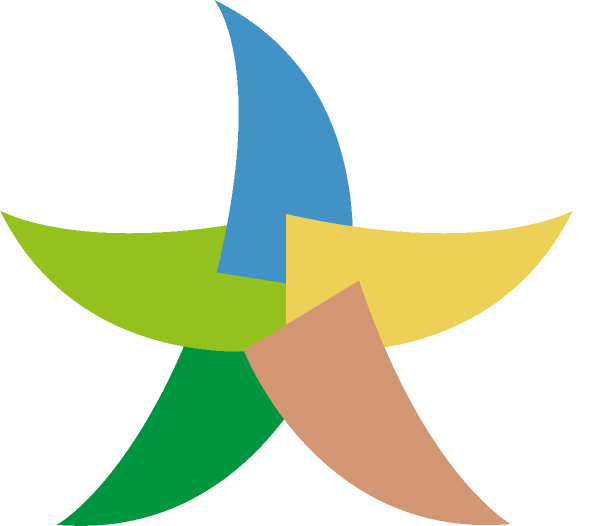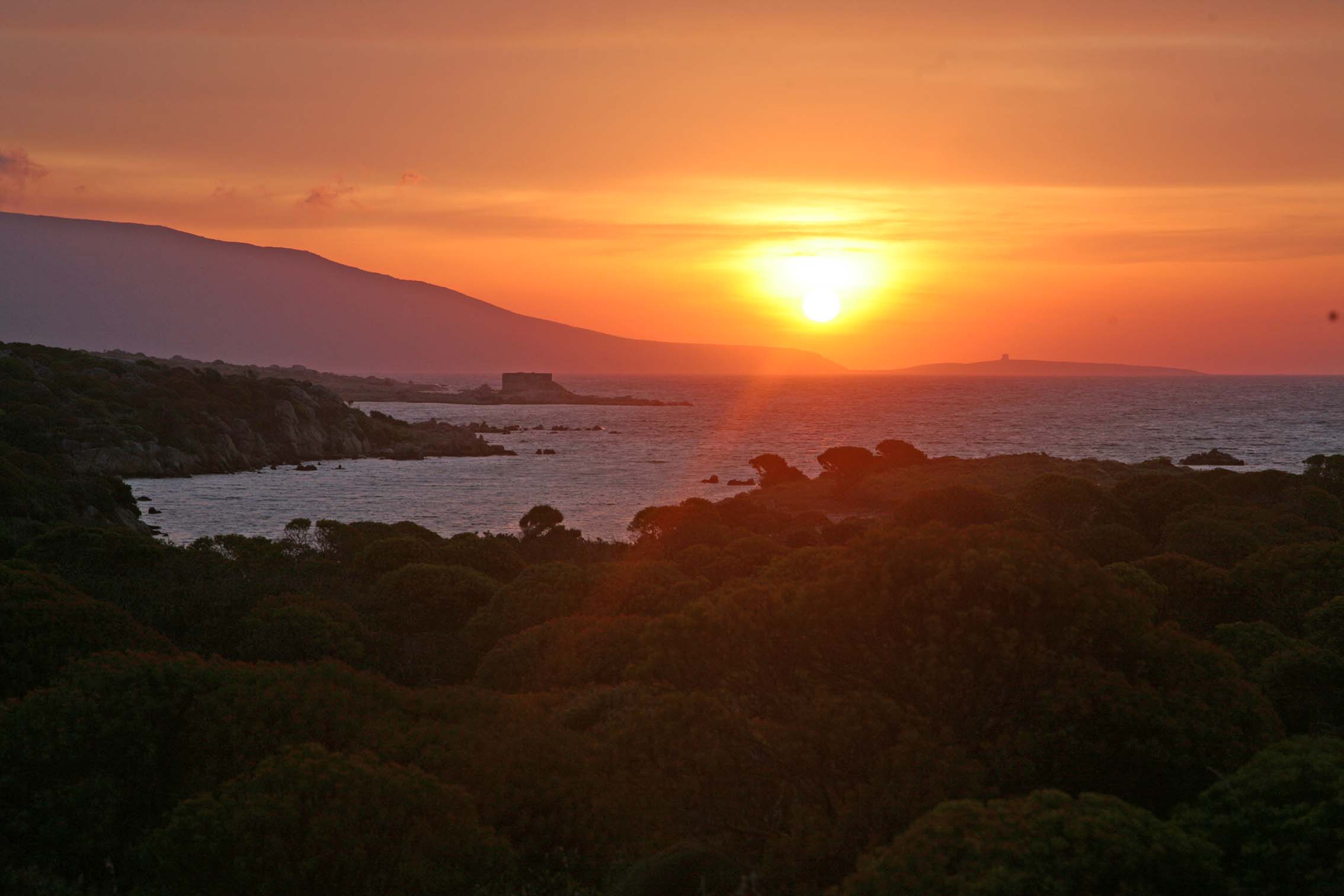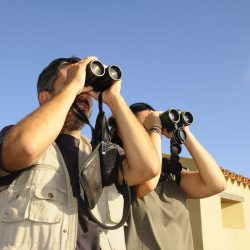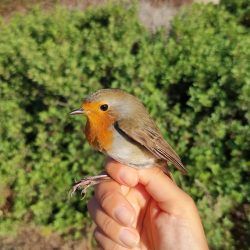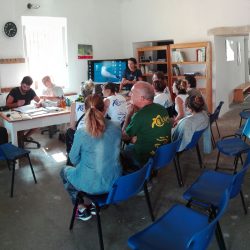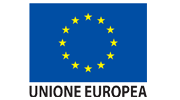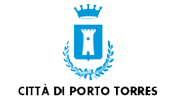Asinara Park
Wildlife Observatory - Tumbarino
TheWildlife Observatory was established at the former Tumbarino Prison Branch with the rehabilitation of several buildings in the small hamlet. The intervention made it possible to house the visitor center and wildlife observatory. Exhibition and multimedia areas have been built in the rooms, which were formerly used as prison living quarters: a green classroom for educational activities, the wildlife and ornithological center, and the laboratory for ringing activities.
The establishment of a Wildlife Observatory within Asinara National Park contributes to the overall program of protection of natural habitats, ecosystems and in particular to the preservation of endangered animal species.
The main objectives of the Wildlife Observatory are: scientific research, with a focus on all wildlife species, whether invertebrates and vertebrates (mouflon, hares and avifauna in general, equids, etc.); studies of the interrelationships and impact of allochthonous species (wild boar/domestic pig, feral cat, goats and magpie) on the local fauna (herpet, avi and mammal fauna) for the restoration of the faunal balance, with the main purpose of defending the animal biodiversity of the Island.
For the Environmental Education and Information System, Tumbarino is a training and educational hub on the environment that contributes to the cultural training of young people and the promotion of proactive synergies for interchange among researchers.
The Wildlife Observatory has already activated collaborations with Departments, University Institutes, Associations and Territorial Bodies that specifically take care of activities and research in the field of conservation of environmental resources.
The current activities of the observatory are:
Ringing of birds for scientific purposes
Ringing is a technique that involves the individual marking of birds by placing a small metal ring on the leg, bearing a unique alpha-numeric code that allows the individual to be recognized should it be recaptured. There has been an active ringing station at the Wildlife Observatory since 1997.
Ringing activities during the year are as follows:
- Monitoring of avifauna present: year-round
- Pre-reproductive migration monitoring: April/May (Small Islands Project)
- Post-reproductive migration monitoring: October/November
International Waterfowl Census (IWC) Waterfowl Census.
Period: January
It is coordinated by the International Waterfowl Research Bureau (IWRB), which collects data and processes them at the European level. In Italy, counts are coordinated by the Istituto Superiore per la Protezione e la Ricerca Ambientale (ISPRA). The census of wintering waterfowl has four main objectives:
- Establish annually the size of wintering populations present in January;
- Identify variations in the size and distribution of populations;
- Determine the importance of various wetlands (based on the number of individuals present or the rarity of certain species)
- Contribute to the conservation of waterfowl and their habitats.
Monitoring of breeding avifauna using MITO (Italian Ornithological Monitoring) methodology.
Period: June
The MITO2000 Project began in Italy in the breeding season of the year 2000 and involves the monitoring of breeding avifauna. The chosen technique is 10-minute-long, single-visit listening points. The Italian territory was divided into squares based on the UTM grid, and stations were identified on a random basis. It is possible to participate in monitoring by learning both song recognition and visual recognition techniques.
White Donkey Census
Period: August
On Asinara Island there is a donkey population in the feral state, consisting of a gray-coated subpopulation (belonging to the Sardinian donkey breed) and an albino subpopulation. This phenotype is related to a form of partial depigmentation typical of albinism.
During August, the census of the white subpopulation is carried out; the census method used is the “complete count” method, which is possible in animal populations limited to circumscribed environments and recognizable individually or by group characteristics. Observations are carried out mainly by transects walked, supplemented by observations from fixed points and by transects driven along main and secondary roads.
Mouflon Census
Period: November
The mouflon (Ovis orientalis musimon) was introduced to Asinara Island in 1952 with three specimens from Capo Figari Reserve and Figarolo Island. The lack of predators has allowed the population to increase to a substantial size. The mouflon has mainly crepuscular or diurnal habits; during extreme hours (dawn and dusk) it is engaged in grazing, moving and social interaction (ideal times for censuses).
Censuses are conducted by observations from vantage points during sunrise and sunset.
Jornades de Biodiversitat
Period: September
The “Jornades de Biodiversitat” consist of four days of naturalistic observations, study and research of the different species of mammals, reptiles, amphibians and birds found on Asinara Island, in the company of Catalan ornithologist Jordi Rodriguez. In addition, there will be classroom lectures, bird ringing sessions for scientific purposes, and a visit to CRAMA (Centro per il Recupero di Animali Marini dell’Asinara (Center for the Recovery of Marine Animals of Asinara).
Other activities
Ringing Courses: with Dr. Danilo Pisu, ornithologist and ISPRA-certified ringer A.
- Photo Weekend: with photographer Mauro Sanna;
- GIS courses: with expert Roberto Facoetti
- Courses in basic statistics and R software.
Would you like to carry out a Training Internship at the Wildlife Observatory?
Contact the Park Authority Offices
parco@asinara.org
How to Visit the Center?
For information on the Wildlife Observatory:
Dr. Danilo Pisu (+39) 338.3957611
Ornithologist, Wildlife Technician
osservatoriofaunisticoasinara@gmail.com
